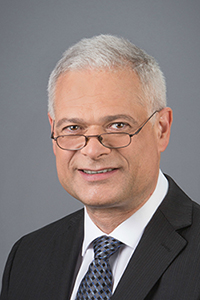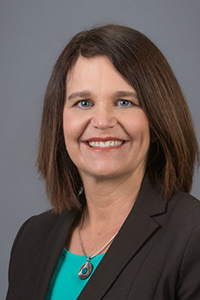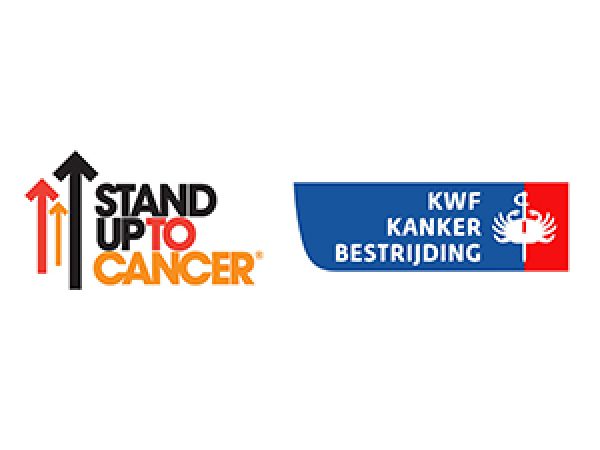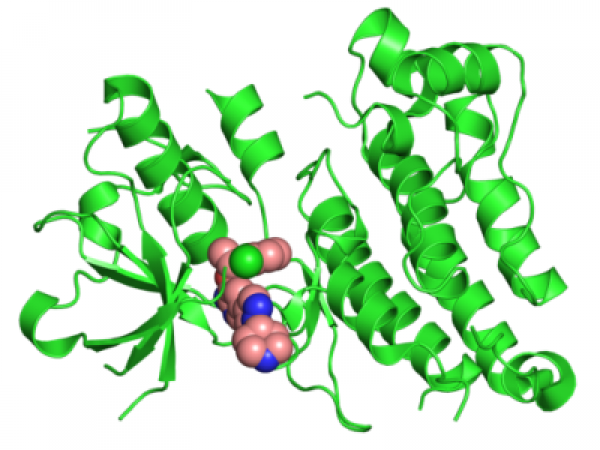Teaming Up Against Ovarian Cancer
Editor’s note: The American Association for Cancer Research is proud to be the Scientific Partner of Stand Up To Cancer. Learn more.
Guest Post by Alan D. D’Andrea, MD, and Elizabeth M. Swisher, MD
SU2C-OCRF-OCNA-NOCC Dream Team
September is Ovarian Cancer Awareness Month, when we scientists and advocates renew our determination to find new solutions to this devastating disease.
This year we are pleased to have seen some encouraging signs. At the Annual Meeting of the American Association for Cancer Research (AACR) in April, scientists reported that a combination of two drugs, olaparib and BKM120, showed clinical benefit for women with high-grade serous ovarian cancer (as well as women with triple-negative breast cancer). In April, the drug rucaparib was granted Breakthrough Therapy Designation by the U.S. Food and Drug Administration to encourage its development as a treatment for advanced ovarian cancer. Immunotherapies that block PD-1 or PD-L1 also demonstrated some activity in recurrent ovarian cancer.
But of course, tremendous challenges remain. More than 21,000 women in the United States will be diagnosed with ovarian cancer this year, and more than 14,000 will lose their lives. Women who respond to chemotherapy frequently recur with drug-resistant disease, resulting in extremely high mortality rates. While more common in older women, ovarian cancer can also strike younger women. We must do more to get a better grip on ways to fight this insidious disease.
That’s exactly what we have set out to do with the new Stand Up To Cancer (SU2C) Ovarian Cancer Dream Team that is being jointly funded by Ovarian Cancer Research Fund (OCRF), Ovarian Cancer National Alliance (OCNA), and National Ovarian Cancer Coalition (NOCC). We are pleased to be lead and co-lead of the team, whose work will be funded over three years with a $6 million commitment. We are thrilled and encouraged to be part of the first research project funded from the collaborative efforts of these key ovarian cancer organizations.
https://youtu.be/W9a8ajmH52E
Our project has two major components. In one, we are targeting certain genetic defects that we see in many ovarian cancers. Specifically, we are targeting the cell’s repair mechanism, which mends breaks in the DNA and corrects mistakes.
In cancer cells, defects in the BRCA1 or BRCA2 genes cause one of the repair mechanisms, or pathways, to lose function. In the absence of an enzyme called PARP, the BRCA defect is exposed and can lead to cell death. Because we have drugs that can inhibit PARP, we can use this to our advantage. We hope to use the PARP inhibitors to interfere with the DNA repair mechanism in the cancer cells – and only the cancer cells – thus causing the tumor to shrink, or even disappear.
While that may sound simple, a tremendous amount of work has yet to be done. Scientists at multiple institutions will be involved in this important research effort.
The second major aspect of our project focuses on risk assessment and prevention of ovarian cancer. We know that having a BRCA1 or BRCA2 mutation can increase the likelihood of a woman developing ovarian cancer in her lifetime to as high as 60 percent. Other genes can also influence the risk profile. Removal of the fallopian tubes and ovaries can be beneficial to women at high risk. However, younger women are often not willing to undergo this procedure because it can impact a woman’s ability to conceive and induces premature menopause.
We need a better understanding of genetic risk so that we can properly advise women on their need for testing and, potentially, the role of surgery in reducing their risk. We may also be able to effectively reduce a woman’s risk with fallopian tube removal only, an approach that may be more acceptable to younger women, since their ovaries would be spared and premature menopause avoided. Our research will help answer the questions still swirling around genetic risk and, we hope, refine the role of counseling in helping women consider all of their options.
We are deeply grateful for the support of SU2C, OCRF, OCNA, and NOCC, which has given us the chance to work together on new and exciting research for the long-term benefit of women facing this horrific disease. We are hopeful that as a result of our work and other similar studies, real progress will be made in the struggle against ovarian cancer.
Alan D. D’Andrea, MD, is leader of the SU2C-OCRF-OCNA-NOCC Dream Team; director, Center for DNA Damage and Repair, Dana-Farber Cancer Institute; and Fuller-American Cancer Society Professor of Radiation Oncology, Harvard Medical School. Read his full bio.
Elizabeth Swisher, MD, is co-leader of the SU2C-OCRF-OCNA-NOCC Dream Team; professor of obstetrics and gynecology and adjunct professor of medical genetics, University of Washington; and medical director, Breast & Ovarian Cancer Prevention Program, Seattle Cancer Care Alliance. Read her full bio.





